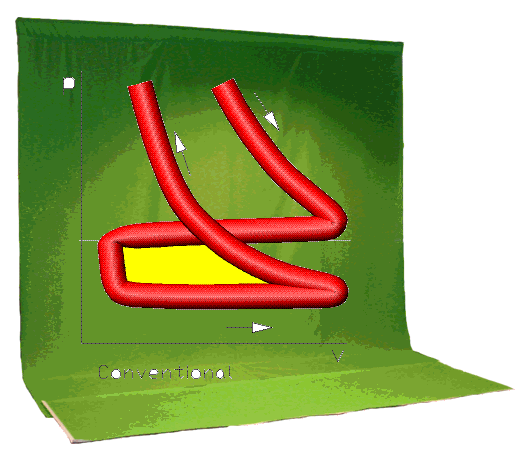


hat tips pepper and travess
“Thus the studio is a place of multiple activities: production, storage and finally, if all goes well, distribution.”
Buren, Daniel, “The Function of the Studio,” trans. Thomas Repensek, October 10 (Fall 1979): 53 (emphasis added)
The above quote (minus the cheeky emphasis) hails from Caitlin Jones' recent discussion of the internet as post-studio environment. Some good thoughts with mostly terrible examples. (Nasty Nets and Petra Cortright, fine; Oliver Laric and Aleksandra Domanovic, long-winded/didactic; Ryan Trecartin fashion model dress-up page, insufferable/incoherent.)
Jones gets a bit carried away with the supposed openness of the post-studio laptop studio. Plenty happens on the Net that's beyond the artist's reckoning, but that doesn't mean the artist isn't controlling and shaping a persona and how much of an idea "gets out there." Also, how open is a piece of artwork that absolutely "requires Intel-based Mac, OS X v10.5 or later" to be experienced? Many of Jones' examples predate the "login required" social media sites that are fragmenting rather than opening up the Web.
"Open to friends" is not really the same as "open."
"If a tree falls in a walled garden..."
Hat tip Nicholas for the Jones link
"Weather Watch," by Mr. Andrew [YouTube] reminiscent of early '00s ambient electro (Plod, Duracel, Plasmalamp, et al) except this is from 1982 (hat tip stage)
"Trollz" by Glass Popcorn [Soundcloud] Mr. Popcorn "redefines dubstep" in the defining deviancy down sense of making it louder, grittier, and funnier. By the end this song is just square waves. What the home computer revolution should be about.


"Clangs and Whimpers (Short)" [mp3 removed -- some of this got incorporated into Field Whimpers, on Bandcamp]
"Clangs and Whimpers" [mp3 removed]
mmmd1 stands for minimal morphing machine drum--an analog-modeling synth/sequencer from the Reaktor user library that un-analogically allows you to morph among hihat, snare, and bass drum to get your drum hit. The amount each of those percussion types contributes to the sound of the hit depends on the position of a yellow square in the step key boxes above. The parameters of those three sounds can also be messed with, pre-morph, using the dials under bd, sd, and hh.
In this song I used the mmmd with effects as shown above. The diagram isn't entirely accurate in that several recording sessions were done, each time with the effects configured slightly differently:
Session One: All drums (mmmd1 "Out" in the diagram) went through Flatblaster 1.0 (a compressor/limiter) to channels 1 and 2.
Session Two: Hihat through Echomania (delay) to channels 1 and 2.
Session Three: All drums through Instant Repeater (another delay that adds pitch), then Flatblaster, to channels 1 and 2.
Session Four: As shown above. Since Reaktor's inboard .wav recorder only records channels 1 and 2, I used a second PC to record all four channels simultaneously through an ADAT connection. I could have configured my sound card to do this on a single PC but frankly I get confused with all the in/out and it's too much bother trying to avoid feedback loops among player, recorder, and monitor.
I then did post-production in Cubase with the .wav files resulting from those sessions (cross-fading them and using automation curves to add and subtract reverb).
Am posting two versions of this song. They are identical, except that the long one has more variations and gets progressively noisier. What interests me most in both versions is the funky robot syncopation resulting from the layered delay tracks. Like syncopation at its most primitive and reductive. The sound overall is pretty harsh--the reverb provides the only softening factor.

a melding of two pics posted to dump.fm (one by carjackcker and one by blingscience). This was briefly on the daily hall of fame but was edged out by a "dudes with mohawks" theme